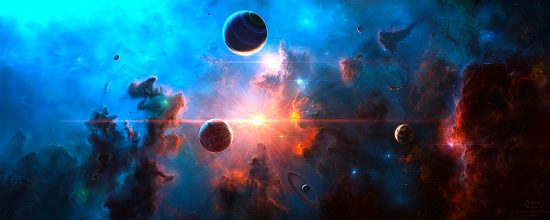Nov 30, 2016
Currently accepted theories have evolved a long way toward catastrophics from their ancestry in uniformism.
Assumptions of actualism and gradualism-that present-day processes acting over long times could explain the changing morphology of rocks and species-have been displaced. Impacts from space have broken the continuously gradual action of erosion and natural selection into discrete episodes of modification of morphogenic discontinuities. Proposals such as the Alvarez asteroid and the Clubian comet appeared at first to add a few spectacular footnotes to the geologic record. Now they threaten to become the shapers of that record.
Less apparent than this evolution from ideas of continuity to ideas of discontinuity is an underlying movement in viewpoint. The development of ideas over millennia can be simplistically characterized as a movement from explaining unfamiliar phenomena in terms of familiar to explaining all phenomena-familiar as well as unfamiliar-in terms of immanent intelligibility. Examples would be the change from geocentrism to heliocentrism and from anthropocentrism to open-ended evolutionism.
For the purposes of this opinion, I’ll limit my simplistically characterized movement to a segment beginning with uniformism and extrapolated one step forward. Uniformism (and its fellow travelers in physics: gravitation, expanding universe, etc.) is thus (relatively) geo- and anthropo-centric. Or perhaps helio-and Homo-centric would be better: It seeks to explain all space and all time in terms of processes active locally (in the solar system) in the present (as experienced by modern humans with their technologically-enhanced senses). It projects this momentary condition (of only a few centuries) of our tiny planetary system as sensed by one species (us) onto vast expanses of time and space. It illuminates There and Then with the light of Here and Now.
In contrast, my one step forward would reverse this: It explains the local present in terms of processes active throughout the cosmos and throughout the past. It sees beyond our noses and the immediate blink of our eyes to place us in a cosmic context. It illuminates Here and Now with the light of There and Then.
Intellectually, the two should be equivalent: We can start with This and try to explain That, or we can start with That and try to explain This. But geo-anthropo-ego-centrism tips the balance: We “naturally” prefer to explain That with This. One of the basic principles of scientific investigation is to keep such biases from influencing results. There’s an inherent tension in this: A certain passion for dispassionate research is essential. An operative criterion is to let Nature speak for herself-in this case, to let the cosmos and the past speak for themselves. But we ask the questions, and the answers are constrained by the limits inherent in the questions, i.e., by our assumptions, viewpoint, mindset. We can counteract this bias by rephrasing the questions to invert (or at least to change) the limits. And we can pay attention to hints-to the things that don’t fit.
Excess redshifts (in stars) showed up early last century. They were ignored until Halton Arp discovered physical and statistical connections between high- and low-redshift extragalactic objects. Suddenly, astronomers were able to ask the question “Is redshift caused by some intrinsic mechanism and not solely by the Doppler effect?” instead of declaring “What else could it be but Doppler!” Suddenly, the Expanding Universe with its clusters of galaxies elongated along axes pointed at the Earth collapsed into superclusters not pointing at the Earth. (Geocentrism is alive and well and hiding in the Expanding Universe.)
A long list of researchers, from Birkeland before 1900 to Thornhill today, discovered many unexpected properties of electrical discharges: pinching, braiding, formation of sheaths, isomorphism over large ranges of scale. They recognized close similarities in certain characteristics of the sun and other stars, of nebulae, and of galaxies. Their proposals for an electrically active cosmos were ignored, but the opportunity now exists to ask questions without gravitational limits and to let the stars and galaxies answer: Do stars generate light the way arc lamps do rather than by astronomical accumulations of insignificantly-gravitating particles? Do galaxies generate X-rays the way a dentist does rather than squeezing them out of unimaginably pressurized holes that shouldn’t let anything out?
The legends of our prehistoric great-grandparents from around the globe tell a coherent story. Their art and architecture and rituals illustrate that story. They appear somewhat obsessed with it. This has been noticed for some time. But Velikovsky said it out loud, and the questions were lost amid the howls and denials. Talbott, Cardona, and Cochrane (to name three recent researchers) put together a model that re-opens the mouths of our great-grandparents and enables them to speak again of planetary gods hurling lightning bolts at each other. Are these the same cosmic lightning bolts that Thornhill suspects of electrifying the universe? Is this electrified universe pinched into a couple of “ball-lightning” superclusters that resonate at quantized values of redshift?
I’m framing these questions with deliberate passionate bias. (It’s an editorial, after all.) The point (for me) is to jostle loose the ossifications of thought that accumulate around widely accepted ideas. There’s a whole universe out there to discover, and our ideas are still stuck plodding around in the provinces. It’s time to move to the Big City of cosmo-centric ideas.
Mel Acheson













